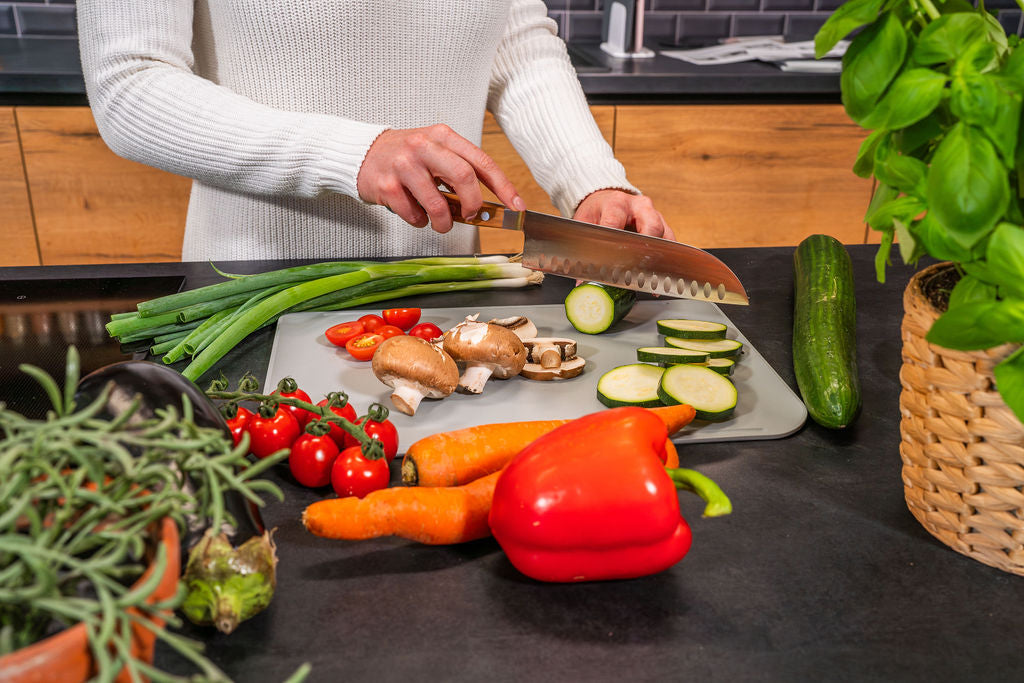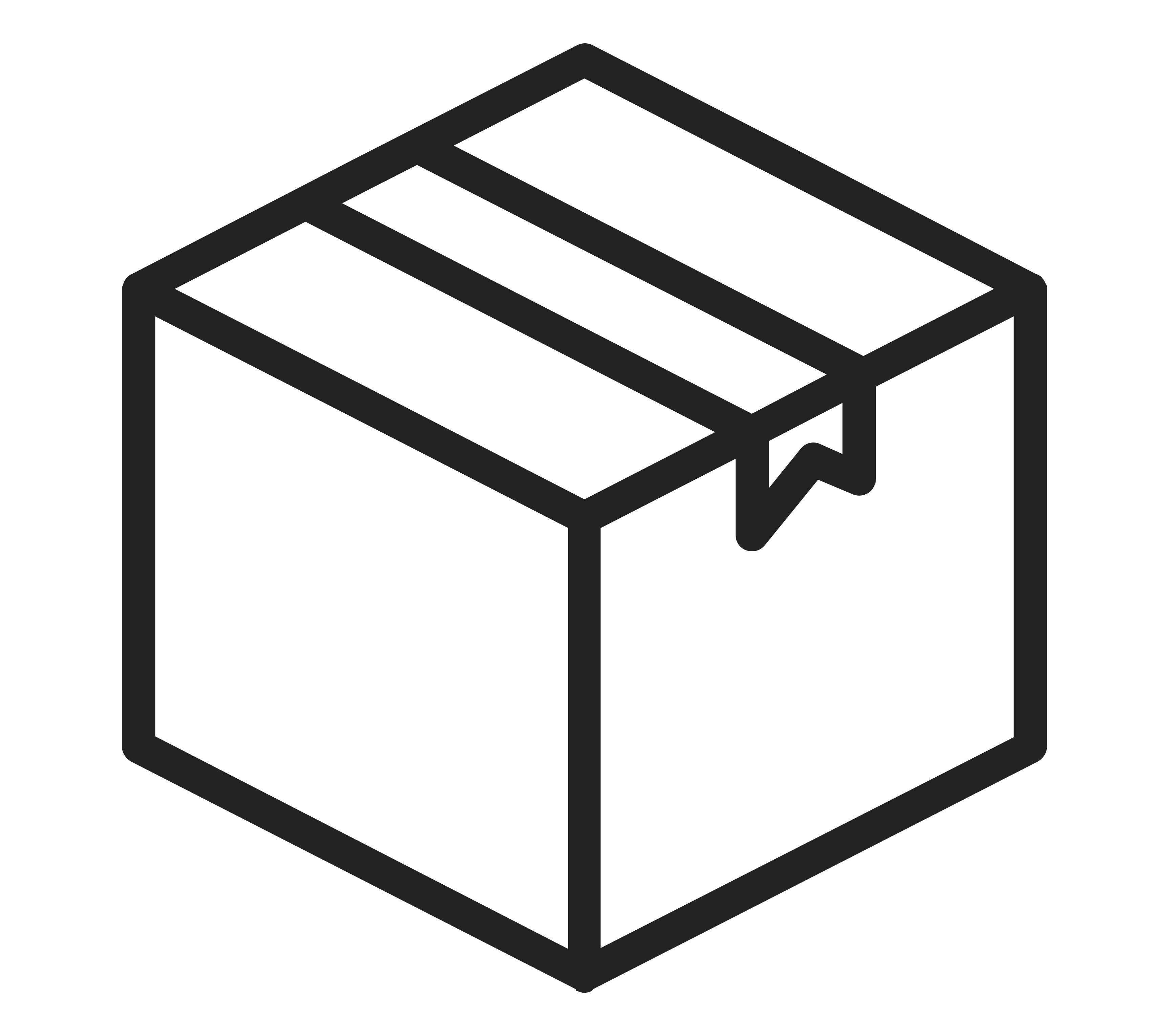A chopping board is one of the most important utensils in the kitchen alongside a kitchen knife. Choosing the right cutting board is therefore crucial and serves as a real kitchen helper in everyday life.
But which material is best, what should the chopping board be able to do and what should you look out for - here you can find out our tips for choosing the right chopping board.
Cutting board set: why you should use different boards
In principle, the material of the chopping boards plays a subordinate role when it comes to hygiene. What matters is the separation of cutting boards for different foods. Why this is actually necessary?
Some foods, such as fish or raw meat, contain many germs that accumulate in the cutting grooves of the chopping boards. These cannot always be completely removed in the dishwasher and are transferred to other foods, which could even lead to food poisoning.
It is therefore advisable to use different boards for different foods to avoid hazards.
For example, you can use separate chopping boards in individual colors for fish/meat and fruit/vegetables.
What to look out for when choosing your chopping board
Once you start looking for chopping boards, you will quickly realize that there is a huge selection of boards in a wide variety of options.
What is important when choosing the right chopping boards and what you should look out for when buying, you can find out in our tips.
Your chopping board - which material is best?
Whether wooden chopping boards, plastic boards or cutting boards made of marble and glass - there are now countless materials for chopping food and they all differ in terms of their properties and advantages and disadvantages.
When choosing, you should therefore consider the properties of the materials and what suits your needs.
While wooden boards cannot be cleaned in the dishwasher, some types of wood, such as oak or bamboo, have an antibacterial effect and prevent bacteria from multiplying quickly.
Plastic boards, on the other hand, can be easily cleaned in the dishwasher, but cutting grooves can quickly form, especially on cheap boards, due to the many cuts.
Other materials such as kitchen boards made of marble, stone or glass are made of very hard materials and look super chic, but they are difficult to handle, not always dishwasher-safe and cutting knives dull quite quickly.
You can find out more about the properties and advantages of each material in our article, which goes into more detail about which chopping board should be used for which purpose.
Decisive factors for the choice of material are durability, ease of care and cut resistance. You should definitely find out about these properties so that you can choose the right chopping board for your needs.
The right size
In addition to the material, the size of the cutting board also plays a decisive role. You should definitely choose a board that is large enough so that you don't constantly miss something when cutting certain products
If you are cooking for several people at the same time, it is better to have a larger chopping board so that chopping goes faster.
Hardness
The hardness of the chopping board is basically determined by the material. Even if you have already read something about the material, the degree of hardness plays a major role when cutting, which is why you should inform yourself well about it.
Soft materials are particularly good for cutting knives, as the blades don't dull too quickly and you don't have to constantly sharpen your knives. Plastic or wooden chopping boards are particularly recommended. These yield well to the knives and you can use the kitchen knife for quite a long time.
However, you should be aware that soft materials tend to develop grooves and cracks quickly, in which bacteria can accumulate that cannot always be removed.
For this reason, many people opt for chopping boards with a hard surface, such as glass or marble boards, on which virtually no cuts occur.
You can find more information on the advantages and disadvantages of the various materials in terms of hygiene here.
In general, high-quality plastic boards are a good choice, as the surface has the right hardness so that cutting grooves tend to form slowly and are not as deep as on boards made of soft material.
If a surface with as few cuts as possible is important to you, you may be interested in this article.
Stability
If you are looking for a chopping board, you should definitely consider its stability. If your chopping board slides back and forth when cutting, this could be very dangerous for you
When buying, look for chopping boards made of non-slip material or with rubber feet. Many wooden chopping boards are not always non-slip and could slip quickly, which is why rubber feet are definitely recommended.
Care requirements
If it is important to you in the kitchen to have as little work as possible, you should definitely choose a board that requires little maintenance. In this case, plastic made from high-quality material is particularly practical, as it usually lasts a very long time, has few cutting grooves and does not require much attention when cleaning.
These can be put in the dishwasher and, apart from that, require hardly any maintenance.
Note that wooden boards require comparatively high maintenance, as you always have to make sure that the wood does not warp or that it needs to be sanded and oiled to maintain the surface.
Sustainability
If sustainability is particularly important to you, most plastic chopping boards are not suitable for you, as you will have to dispose of them after a while.
In this case, we therefore recommend a particularly high-quality plastic board or simple wooden boards. In general, you should look for durable materials where the boards still look like new even after some time and are easy to maintain.
Individual factors
In addition to all the factors such as material, size or degree of hardness, there are also some aspects that are important to everyone differently.
For many, a cutting board with a juice groove is important so that the fruit juice flows into the groove and does not stain the work surface.
Others value handles or recessed grips so that the boards are easier to hold, which can be particularly practical when cleaning.
There is definitely a lot to consider when choosing a chopping board.
Instead of taking a board with the lowest possible price, it often pays off to take a good quality cutting board, as you can use it for quite a long time and it requires comparatively little maintenance.







